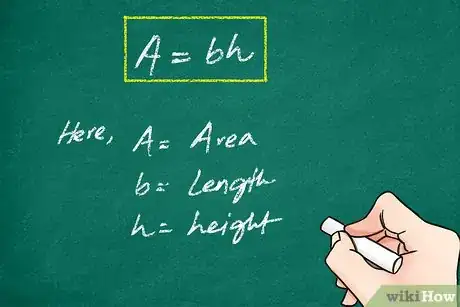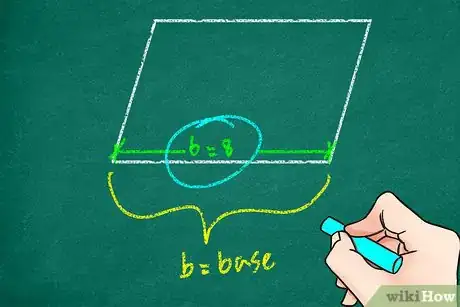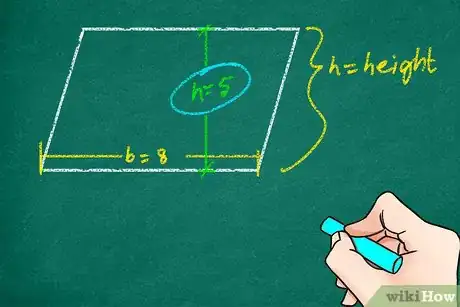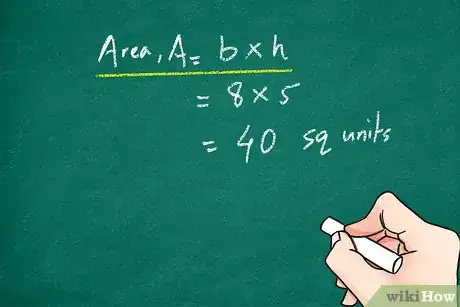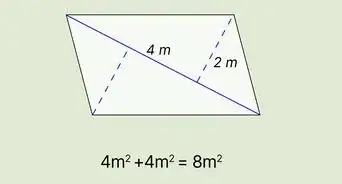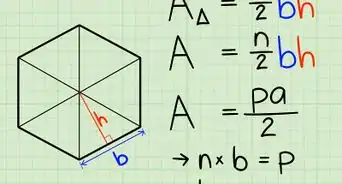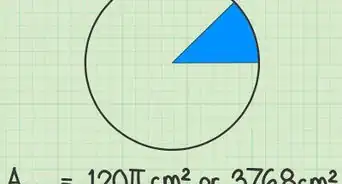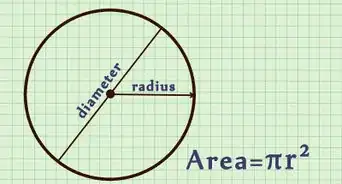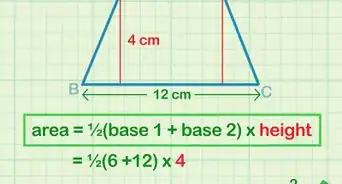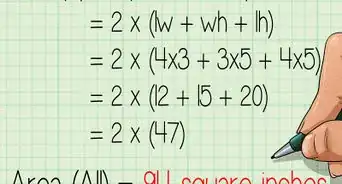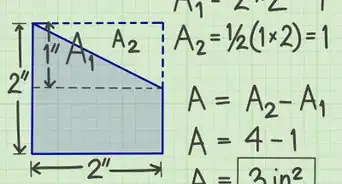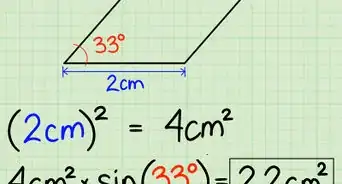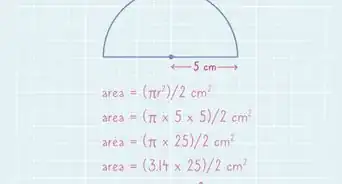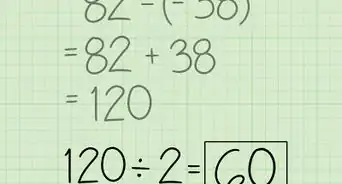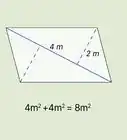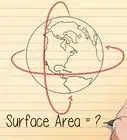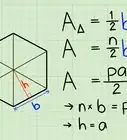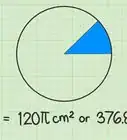wikiHow is a “wiki,” similar to Wikipedia, which means that many of our articles are co-written by multiple authors. To create this article, 16 people, some anonymous, worked to edit and improve it over time.
This article has been viewed 144,147 times.
Learn more...
A parallelogram is defined as a simple quadrilateral with two pairs of parallel sides. If you need to find the area of a parallelogram, it's easily done with a simple formula.
Steps
-
1Write down the formula . stands for the area, stands for the length of your parallelogram, and stands for the height of your parallelogram.[1]
-
2Locate the base of the parallelogram. The base is the length of the bottom side of the parallelogram.[2]Advertisement
-
3Locate the height of the parallelogram. The height is the length that a perpendicular line must travel from the bottom to the top of the parallelogram.[3]
-
4Multiply the base and the height together.[4]
Community Q&A
-
QuestionHow did you get the formula?
 DonaganTop AnswererIn terms of calculating area, a parallelogram is exactly like a rectangle of the same base and height, so the area formula is the same for both figures.
DonaganTop AnswererIn terms of calculating area, a parallelogram is exactly like a rectangle of the same base and height, so the area formula is the same for both figures. -
QuestionWhat is the difference between area and perimeter?
 Community AnswerPerimeter is the full length of the outline of a shape. It's the sum of the lengths of all the sides. Area is the amount of space contained within the perimeter.
Community AnswerPerimeter is the full length of the outline of a shape. It's the sum of the lengths of all the sides. Area is the amount of space contained within the perimeter. -
QuestionHow do I find the area of quadrilaterals?
 DonaganTop AnswererThere are formulas for the area of specific quadrilaterals but none for "quadrilaterals" in general.
DonaganTop AnswererThere are formulas for the area of specific quadrilaterals but none for "quadrilaterals" in general.
References
- ↑ https://www.khanacademy.org/math/cc-sixth-grade-math/x0267d782:cc-6th-plane-figures/cc-6th-parallelogram-area/a/area-of-parallelogram
- ↑ https://www.omnicalculator.com/math/parallelogram-area
- ↑ https://virtualnerd.com/geometry/length-area/parallelogram-triangles-area/parallelogram-area-example
- ↑ https://www.mathopenref.com/parallelogramarea.html
About This Article
To find the area of a parallelogram, use the formula area = bh, where b is the length of the parallelogram and h is the height. For example, if you were trying to find the area of a parallelogram that has a length of 10 and a height of 5, you'd multiply 10 by 5 and get 50. Therefore, the area of the parallelogram is 50. To see more examples of how to find the area of a parallelogram, keep reading!
